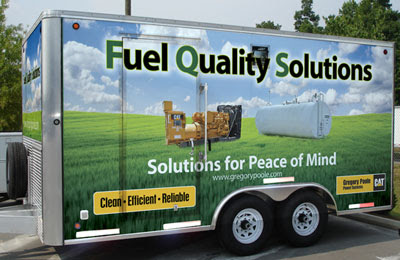
As soon as it is produced, diesel fuel begins to deteriorate. Less than 30 days of refining, all diesel fuel, regardless of the brand, goes through a natural process called oxidation. This process forms varnishes and gums in the fuel by causing the molecules of the fuel to lengthen and start bonding together.
Now, these components will drop to the bottom of the fuel tank and form diesel sludge. The fuel will begin to turn very dark in color, smell bad, and cause the engine to smoke. The engine starts to smoke as some of these clusters are small enough to pass through the engine filtration and on to the combustion chamber.
As the clusters begin to increase in size, only a small amount of the molecules will get burned, as the rest will go out the exhaust as unburned fuel and smoke. Its estimated that eight out of every ten diesel engine failures are directly related to poor quality and contaminated fuel. The build up of contamination in the fuel systems and storage tanks can clog filters, thereby causing the engine to shut down, and damage to the engine to occur.
The number one reason for bad fuel is due to the increasing popularity of diesel power and the accompanying increased demand for more diesel fuel. Long ago, diesel fuel remained in the refinery storage tanks long enough to naturally seperate and begin to settle, allowing the clean fuel to be drawn apart. Now, with the demand getting higher than ever, the fuel is never stationary long enough to settle, and the suspended water and solids are passed on to the person buying the fuel - you.
The changes in refinery techniques is also a problem. In order to get more products, diesel fuel is being refined for more marginal portions of the crude barrel. This results in a lower grade product that is thicker and also contains a lot more contamination.
As time continues to pass and technology gets better and better, one can only hope that the quality of diesel fuel improves. As it stands now, the quality isn't good at all. If you run diesel fuel, all you can basically hope for is that the fuel youare getting isn't contaminated.












